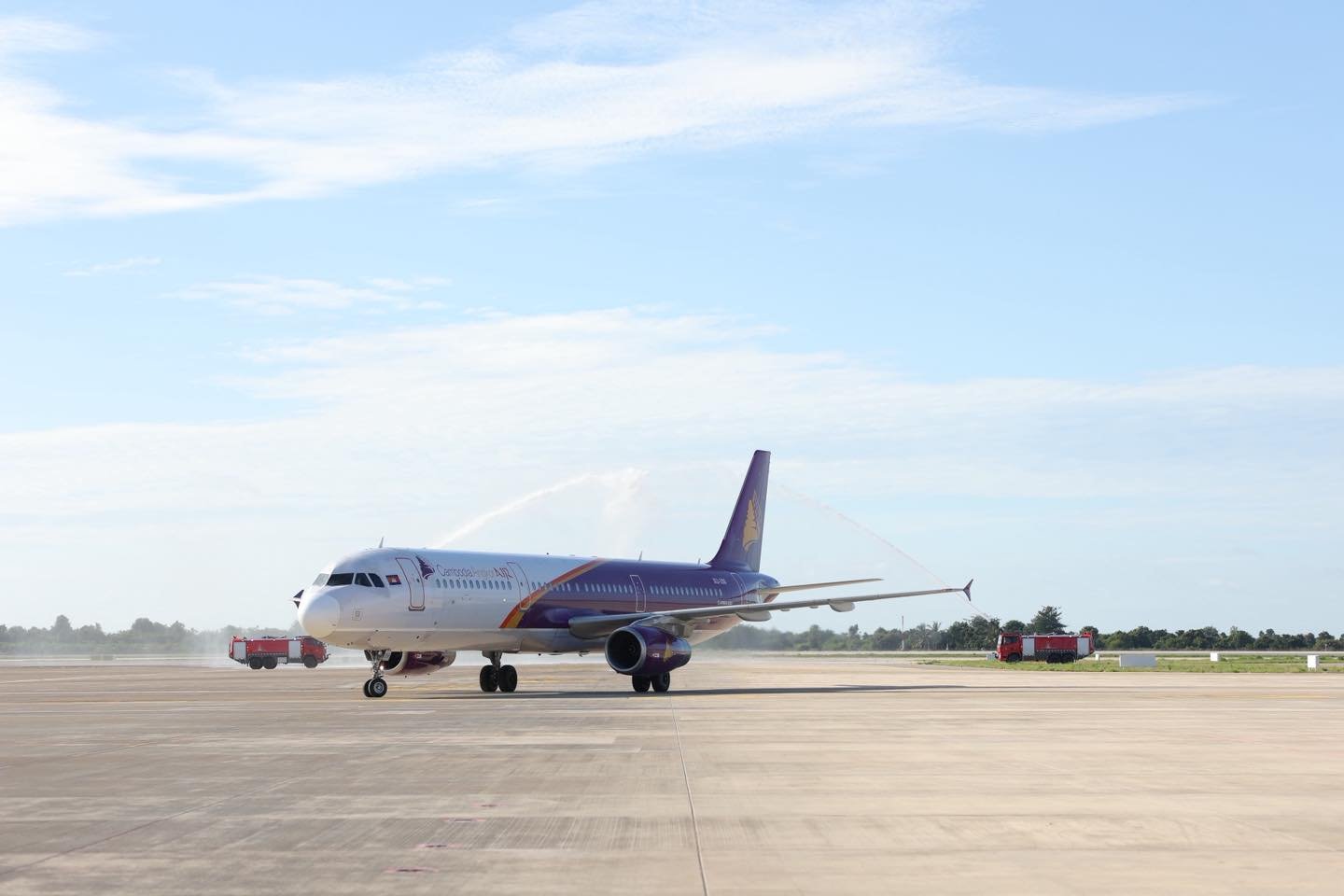Traveling between Phnom Penh and Siem Reap is one of the most common journeys in Cambodia, and there are several ways to make the trip depending on budget, time, and comfort. The quickest option is by plane, which takes about an hour, while traveling by road usually takes between five and seven hours.
Many choose a private taxi for a balance of speed and convenience, while others prefer the lower cost of buses or mini-vans. Flights offer the fastest route, but road travel allows a closer look at the Cambodian countryside. Each option has its trade-offs in terms of price, comfort, and reliability.
This guide explains the distance between the two cities, compares flights, buses, and taxis, and shares practical tips to help make the journey smooth. With clear details on travel times and costs, it becomes easier to decide which way to go from Phnom Penh to Siem Reap.
Overview of Travel Options
Travel between Phnom Penh and Siem Reap can take as little as one hour by air or up to six hours by road. The main choices differ in cost, comfort, and reliability, giving travelers flexibility depending on their budget and schedule.
Direct Flights
Flights between Phnom Penh and Siem Reap are the fastest way to cover the distance of about 320 km. Cambodia Angkor Air and other regional airlines operate this route, with flight times averaging 50 minutes. Ticket prices usually range from $80 to $200 one-way, depending on demand and booking time.
Air travel saves time, but passengers should account for airport check-in and transfer times. Domestic flights in Cambodia can sometimes face delays or cancellations, so flexibility is important.
Most flights use smaller planes like the ATR72, which are safe but offer limited onboard amenities. Luggage allowances may also be stricter than on international routes.
For travelers with tight schedules, flying remains the most convenient option despite the higher cost. Tickets can be booked online through platforms such as Cambodia Angkor Air.
Bus Services
Buses are the most budget-friendly way to travel from Phnom Penh to Siem Reap. The journey usually takes 5.5 to 7 hours, depending on traffic and road conditions. Ticket prices range from $10 to $18, making it accessible for most travelers.
Companies like Giant Ibis are popular with visitors because they provide air-conditioning, WiFi, and power outlets. They also allow online seat reservations, which adds convenience.
Day and night departures are available, with night buses offering sleeping berths. While cheaper companies exist, they often make frequent stops and use older vehicles.
Travelers prone to motion sickness may prefer full-size buses, as they provide smoother rides compared to smaller vans. Schedules and booking options can be found through operators such as Giant Ibis.
Private Car and Taxi
Hiring a private car or taxi offers the most direct and comfortable road option. The trip usually takes 4 to 6 hours, depending on traffic and route. Costs range from $80 to $100 for a standard sedan and can go higher during holidays.
Booking online often provides SUVs like Lexus 4x4s, which are more spacious and reliable. Guesthouse-arranged taxis are usually Toyota Camrys, which may feel cramped with large luggage.
Larger groups can book minivans or small buses, with prices from $120 to $200 depending on vehicle size. These options are good for families or groups traveling together.
Travelers should confirm in advance whether the driver will make extra stops. Online bookings usually ensure a direct trip, while locally arranged taxis may stop to pick up packages. More details on booking can be found at Move to Cambodia.
How far is Siem Reap from Phnom Penh?

Siem Reap lies about 320 kilometers (199 miles) from Phnom Penh by road. The distance makes it one of the most traveled routes in Cambodia, connecting the capital with the city best known as the gateway to Angkor Wat.
Travel time depends on the mode of transport. A flight covers the distance in under an hour, while road options such as buses, vans, or taxis usually take 4 to 6 hours, depending on traffic and road conditions.
The table below shows an overview of distance and average travel time:
| Transport Mode | Distance | Average Time |
|---|---|---|
| Plane | 320 km | 50–60 min |
| Taxi/Car | 320 km | 4–6 hrs |
| Minivan/Bus | 320 km | 5–7 hrs |
| Boat (seasonal) | Varies | 5–6 hrs |
Some travelers choose the road for lower costs and scenery, while others prefer the speed of a flight. The boat option, available on Tonle Sap Lake, takes longer and depends on water levels.
For more details on distances and travel methods, see guides like Gecko Routes and Asia Odyssey Travel.
Flying from Phnom Penh to Siem Reap

Flying is the fastest way to travel between Phnom Penh and Siem Reap, cutting the journey to under an hour. Travelers can choose from several local airlines with daily departures, and prices vary depending on booking time and demand.
Airlines and Schedules
Flights leave from Phnom Penh International Airport (PNH) and arrive at the new Siem Reap–Angkor International Airport (SAI), which replaced the old REP airport. Major Cambodian carriers such as Cambodia Angkor Air, Lanmei Airlines, and Katmai Airlines operate this route in 2025.
Daily schedules usually include 4–7 flights per day, with more options during holidays and peak tourist months. Morning and late afternoon flights are the most popular, while midday departures are often less crowded.
Some travelers connect through Tan Son Nhat International Airport in Ho Chi Minh City if they cannot find a direct ticket, though this adds travel time. For most visitors, nonstop flights remain the most convenient and reliable choice.
Flight Duration and Costs

The actual flight time between Phnom Penh and Siem Reap is 45–54 minutes. This makes it the fastest option compared to buses or taxis, which take 5–6 hours on the road.
Ticket prices typically range from $50 to $160, depending on the airline, seat type, and how early the ticket is booked. Economy fares usually include 20 kg of checked baggage and one small carry-on. Business class tickets cost more but offer lounge access and priority boarding.
Peak seasons, such as the Khmer New Year or major festivals, can increase costs, so passengers should plan. Compared to buses that cost under $20, flights are more expensive but save significant time and reduce travel fatigue.
Booking Tips for Cheapest Fares
To find the lowest fares, travelers should book at least 2–3 weeks in advance. Prices are often higher when purchased at the airport or within a few days of departure.
Reliable booking platforms like 12go.asia or airline websites such as Cambodia Angkor Air provide updated schedules and promotions. Checking multiple sites helps compare costs across airlines.
Flying on weekdays, especially Tuesday and Wednesday, usually offers cheaper rates than weekends. Early morning or late-night flights may also be less expensive. Flexible travelers who avoid peak holiday dates often secure the best deals.
Traveling by Bus
Taking a bus from Phnom Penh to Siem Reap is one of the most affordable and widely used options. Travelers can choose between standard buses, premium services, or night buses depending on their budget, schedule, and comfort preferences.
Types of Bus Services
Several companies operate buses between Phnom Penh and Siem Reap, with wide differences in quality. Standard buses are the cheapest, often costing between $8–$12, but they may be older and make frequent stops.
Premium operators such as Giant Ibis and Larryta Express charge around $12–$18 and offer newer vehicles, safer driving, and more reliable schedules. These services are popular with tourists and expats.
Night buses are also available, leaving late in the evening and arriving early in the morning. They save on hotel costs but may not suit light sleepers.
| Service Type | Price Range | Travel Time | Notes |
|---|---|---|---|
| Standard Bus | $8–$12 | 6–7 hours | Basic, more stops |
| Premium Bus | $12–$18 | 5.5–6 hours | Safer, more comfortable |
| Night Bus | $15–$18 | 6 hours | Reclining or sleeper seats |
Comfort and Onboard Amenities
Comfort levels vary by company. Standard buses usually provide air-conditioning but little else. Seats may be cramped, and luggage space can be limited.
Premium buses like Giant Ibis often include Wi-Fi, power outlets, and more legroom. They also offer online booking with seat selection, which helps avoid last-minute issues.
Some night buses feature sleeper berths or reclining seats. While these allow passengers to rest, they can feel narrow for taller travelers. Motion-sensitive passengers may prefer daytime buses, as the roads can be bumpy.
Snacks and water are sometimes included in premium services, while budget buses may only stop at roadside restaurants. Travelers should plan if they want specific food or drinks.
Departure Points and Schedules
Bus departures are frequent, with some companies running hourly services during the day. For example, Larryta Express operates nearly every hour between 7 a.m. and 7 p.m., while Seila Angkor also offers multiple daily departures.
Premium companies like Giant Ibis usually run fewer but fixed departures, such as morning, afternoon, and late-night trips. Tickets can be purchased in advance online, which is recommended during busy travel seasons.
Most buses leave from central stations in Phnom Penh and arrive at designated bus depots in Siem Reap. Some operators provide hotel pick-up for an extra fee. Travelers should confirm the exact meeting point when booking to avoid confusion.
For more details on schedules and operators, see the updated guide on buses from Phnom Penh to Siem Reap.
Private Car and Taxi Transfers
Travelers often choose private cars or taxis for a direct, flexible, and comfortable trip between Phnom Penh and Siem Reap. This option allows door-to-door service, rest stops along the way, and the ability to select a vehicle that fits group size and budget.
Hiring a Private Driver
Many companies in Cambodia offer private transfer services with English-speaking drivers. Vehicles range from sedans and SUVs for individuals or small families to minivans and vans for larger groups. Options include Toyota Alphard MPVs, Hyundai H1 minivans, and Lexus SUVs.
A private driver provides door-to-door pick-up and drop-off, whether from Phnom Penh International Airport or a hotel. Some services allow passengers to stop at places like the 12th-century Kampong Dkei Bridge or the spider market in Skun. This flexibility appeals to travelers who want to break up the journey.
Most operators include fuel, tolls, parking, and bottled water in the price. Some, such as Cambodia Taxi Driver, also offer restrooms and meal stops along the way. Passengers can enjoy a more relaxed ride compared to buses or shared shuttles.
Estimated Travel Time and Costs
The road distance between Phnom Penh and Siem Reap is about 320–325 km. Travel time usually takes 5 to 6 hours, depending on traffic and road conditions. Drivers may adjust the pace if passengers want to make sightseeing or meal stops.
Prices vary by vehicle type. For example:
| Vehicle Type | Approximate Cost (one way) | Capacity |
|---|---|---|
| SUV (e.g., Lexus RX300) | $85–$90 | 3–4 passengers |
| MPV (e.g., Toyota Alphard) | $120–$130 | 4–5 passengers |
| Minivan (e.g., Hyundai H1) | $100–$110 | 6–7 passengers |
Some services, such as Viator’s private taxi transfers, start around $65 per person, though group size and vehicle type affect the rate. Booking in advance is recommended, especially during peak travel seasons.
Essential Travel Tips
Travel between Phnom Penh and Siem Reap is straightforward, but planning makes the journey smoother. Paying attention to timing, packing, and local conditions helps travelers avoid delays and stay comfortable on the road or in the air.
Best Time to Travel
The most comfortable months to travel in Cambodia are December through February, when temperatures are cooler and rainfall is low. This is also peak tourist season, so buses, flights, and hotels fill quickly. Booking tickets in advance is highly recommended.
From June to November, the rainy season can bring heavy showers. Roads between Phnom Penh and Siem Reap may become slippery or congested, especially on National Highway 6. Boat services on Tonle Sap Lake also operate only during this period, but are often delayed due to weather.
Travelers who prefer fewer crowds may find March to May less busy, but temperatures can rise above 35°C (95°F). Air-conditioned buses, minivans, or flights are the most practical options during this hot season.
Luggage and Comfort Recommendations
For bus and minivan travel, packing light makes boarding and storage easier. Large suitcases may not fit well in smaller vehicles, so a medium backpack or duffel bag is more practical. Most operators allow one main bag plus a small carry-on.
Comfort items can make long journeys more pleasant. Essentials include:
- Reusable water bottle to stay hydrated
- Snacks for trips lasting 5–7 hours
- Power bank for charging phones
- Earphones to block noise
- Light jacket or scarf since air conditioning can be strong
Travelers using flights between Phnom Penh and Siem Reap should note that domestic airlines often have stricter baggage limits than international carriers. Checking weight allowances before departure avoids extra fees.
Local Insights and Safety
Traffic in Cambodia can feel chaotic, especially when leaving Phnom Penh. Hiring reputable companies for buses, minivans, or taxis reduces risks. Well-known operators such as Giant Ibis and Virak Buntham are considered reliable for safety and service.
Roadside stops are common on longer routes. Travelers should keep their valuables with them rather than in the luggage hold. Cash in small denominations is useful for snacks, restrooms, or tipping drivers.
In Siem Reap, tuk-tuks are the most common way to reach hotels from bus stations or the airport. Agreeing on the fare before departure prevents confusion. At night, well-lit and busy areas are the safest for walking.
